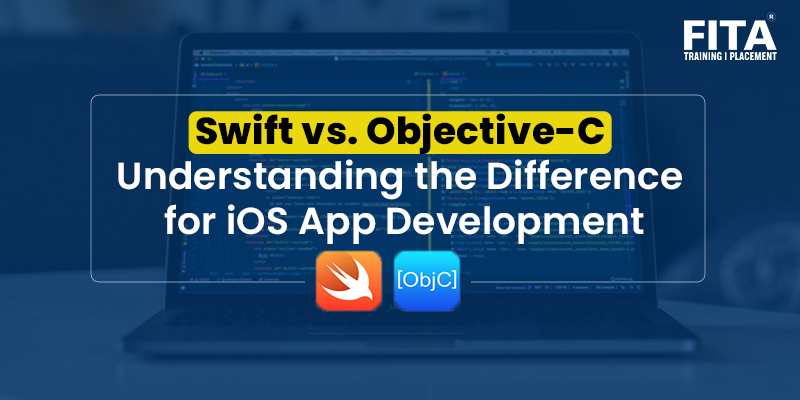
Are you enthusiastic about creating iOS applications and exploring mobile app development for iOS? If so, it’s crucial to familiarise yourself with the available iOS programming languages in order to determine which one aligns best with your goals.
Two widely-used programming languages among iOS developers are Swift and Objective-C. Making a decision between these two languages can be daunting, but this article aims to assist you by providing an overview of both programming languages and highlighting key factors to consider when choosing the most suitable option.
To have a profound understanding of the iOS development environment, you can join an iOS Developer Course in Chennai at FITA Academy and understand ios app development, ios developer skills, ios app development and ios developer roles and responsibilities.
Swift vs Objective-C: The Differences
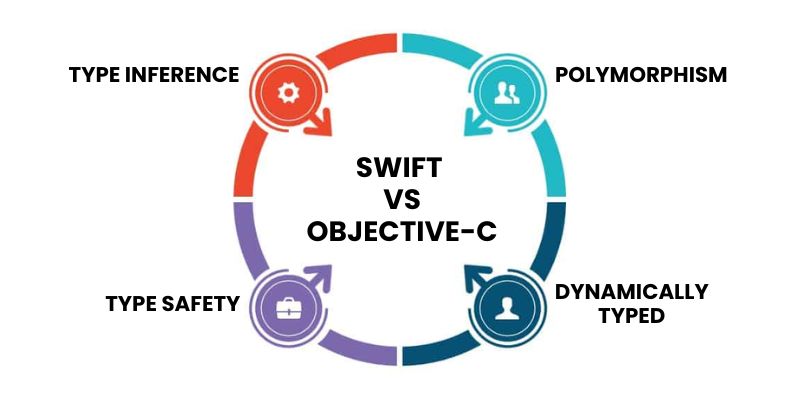
Here are some key differences between Swift and Objective-C that highlight Swift’s newer features:
- Type inference: Swift incorporates type inference, allowing the compiler to deduce the variable’s type based on its assigned value. This eliminates the need for explicit type declarations and enhances code conciseness and development speed.
- Polymorphism: Swift introduces protocols, which enable writing code that can be applied to any type adhering to the protocol without requiring knowledge of the specific type. In comparison, Objective-C’s categories are limited to extending the functionality of a particular type during compile time.
- Type safety: Swift utilises value types rather than reference types. When modifying variables, a new copy of the data is assigned, mitigating issues related to aliasing and improving type safety.
- Dynamically typed: Objective-C is dynamically typed, allowing variables to hold values of any type. In Swift, variables are statically typed and can only store values of specific types. However, Swift incorporates dynamic libraries that optimise iOS app development performance.
If you want to know more about the latest salary trends for Ios developers, Check out IOS Developer Salary for Freshers, which will help you get an insight into the packages as per the companies, skills and experience.
Which to use?
There are several advantages to choosing Swift over Objective-C. Firstly, Swift offers a more readable and writable syntax compared to Objective-C, making code comprehension easier and faster.
Furthermore, Swift prioritises type safety, minimising the likelihood of unexpected outcomes caused by type inconsistencies. By embracing type safety, Swift facilitates the development of more reliable and debug-friendly code.
In terms of memory management, Swift outshines Objective-C by incorporating features such as lazy initialisation. This approach reduces memory usage by avoiding the unnecessary initialisation of unused variables. As a result, Swift improves performance while maintaining readability, writability, and safety.
To delve deeper into the features, benefits, and drawbacks of both Objective-C and Swift, continue reading.
Objective-C Overview
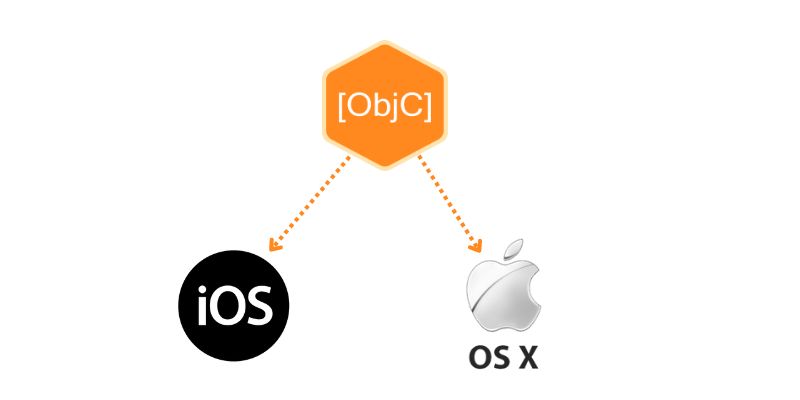
Objective-C is a powerful object-oriented programming language commonly employed in the development of diverse applications and software, including iOS and OS X. It serves the C programming language as an extension, encompassing all of its functionalities. One notable advantage of Objective-C is its dynamic code-loading capability, allowing for the creation of both lightweight and intricate programs.
The origins of Objective-C can be traced back to the 1980s when Brad Cox and Tom Love, who possessed prior knowledge of Smalltalk from their time at ITT Corporation’s Programming Technology Center, collaborated to invent the language. Alongside the development of Objective-C, Cox and Love also created class libraries and the PPI (Portable Object Compiler) to support the commercialisation of their product. Following StepStone’s management of Objective-C, NeXT assumed control until Apple’s acquisition of NeXT in 1996.
Features of Objective-C
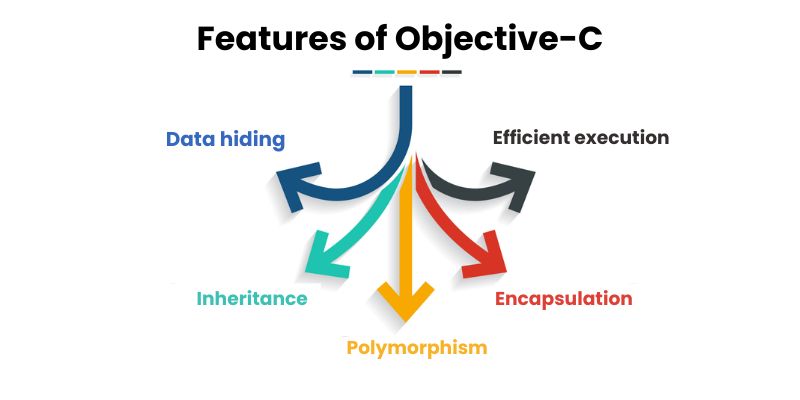
The Objective-C programming language offers a range of compelling features that are instrumental in the development of Apple’s operating system and applications. These features include:
- Data hiding: Objective-C employs data hiding as a safety measure, effectively safeguarding data from unauthorised access. This feature prevents intentional or accidental alterations to the program and ensures restricted data access.
- Encapsulation: The encapsulation feature in Objective-C facilitates the restriction of direct access to an object’s state values, making it easier to hide data, adapt to new requirements, and flexibly designate variables as read-only or write-only.
- Inheritance: Objective-C supports inheritance, allowing users to create new classes based on existing ones. In addition to class creation, the inheritance feature enables code reuse, an independent extension of the original program using accessible classes and interfaces, and the ability to introduce modifications while preserving existing functionalities.
- Efficient execution: Objective-C is designed to facilitate fast and efficient programming, ensuring minimal delays in the coding process. This feature enables developers to write code without unnecessary hindrances from the programming language or software being used.
- Polymorphism: Objective-C incorporates polymorphism, which enables users to access different objects through a unified interface. Polymorphism in Objective-C encompasses both static and dynamic types, providing flexibility in object manipulation.
Advantages of Objective-C
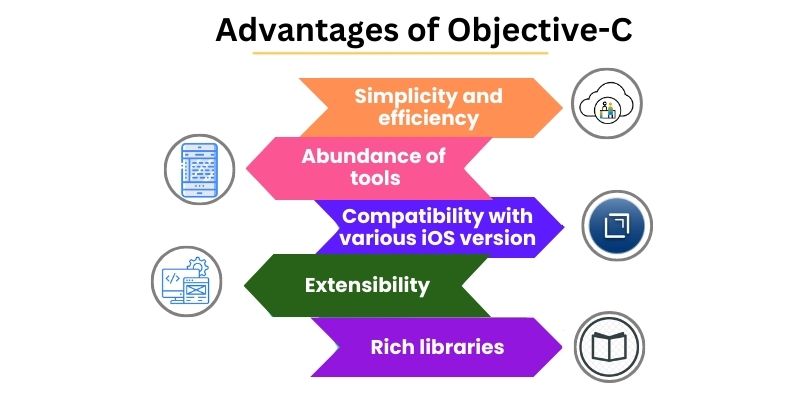
Objective-C, as a programming language, offers numerous advantages that contribute to its popularity and usefulness. Here are a few of them:
Join iOS Developer Course in Bangalore and be a proficient iOS app developer with the help of our various projects and real-time experiments
- Simplicity and efficiency: The fundamental grammar of Objective-C is straightforward and relatively easy to learn. This simplicity enables programmers to comprehend and rebuild existing applications or develop new ones. As a result, Objective-C is frequently utilized as an introductory language for teaching programming to beginners.
- Abundance of tools: With over 30 years of usage, Objective-C benefits from a vast array of tools. These tools include Xcode and the Cocoa framework, provided by NeXT, as well as contributions from third-party developers and Apple. The availability of these tools greatly facilitates the smooth operation of Apple’s operating system and enhances the overall development experience for programmers.
- Compatibility with various iOS versions: In contrast to Swift, which is limited to recent iOS versions, Objective-C is highly compatible with almost all versions of iOS. This compatibility is a result of Objective-C’s long-standing existence and extensive usage in the creation of numerous Apple applications.
- Extensibility: Objective-C was designed to enable quick and seamless program extension. Programmers can easily add new functions to existing software with minimal or no major alterations required.
- Rich libraries: Objective-C provides a comprehensive collection of libraries with built-in features that simplify programming. Additionally, programmers have the opportunity to develop and include their own custom-designed features within the library.
Disadvantages of Objective-C
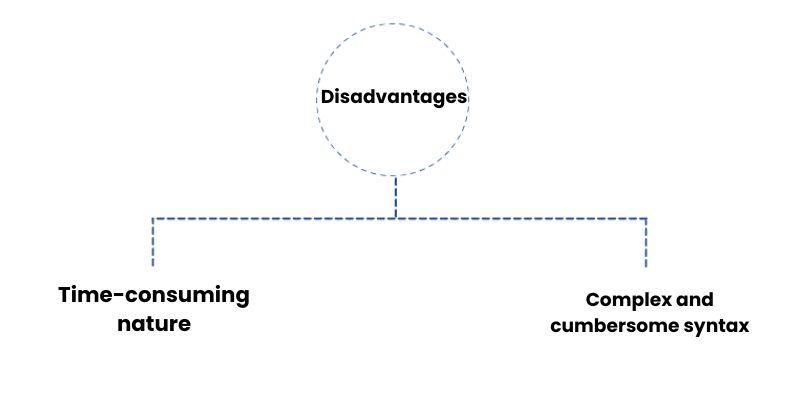
While Objective-C possesses various strengths, it does have a few notable limitations.
Time-consuming nature: In comparison to modern programming languages like Swift, Objective-C generally requires more time to write code. This increased time investment can incur higher costs for programmers and potentially lead to delays in software application launches.
Complex and cumbersome syntax: Objective-C’s syntax is considered more intricate and cumbersome when compared to other contemporary programming languages like Swift. Unlike Swift, which employs a syntax resembling modern English, writing Objective-C code can be more challenging and less intuitive.
Swift overview
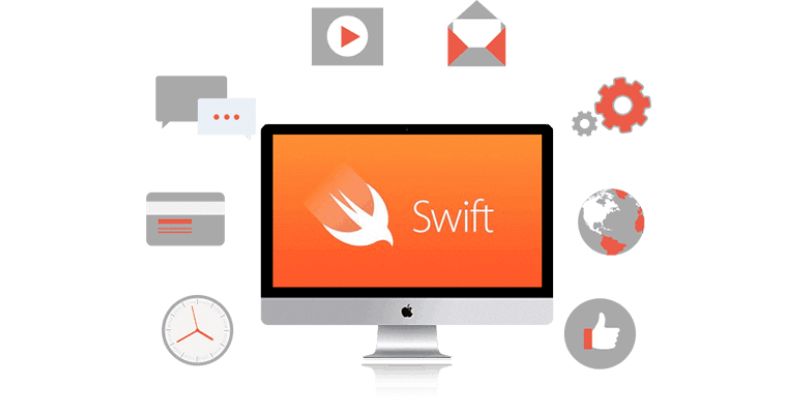
Swift is a programming language created and introduced by Apple, with its initial announcement in 2014 and subsequent public release in 2015.
Known for its readability and writability, Swift surpasses other programming languages in terms of error resilience. It is an open-source language that enjoys compatibility across various platforms, including iOS, macOS, tvOS, watchOS, and Linux. Furthermore, Swift seamlessly integrates with Objective-C, enabling developers to leverage both languages for software development purposes.
Swift Features
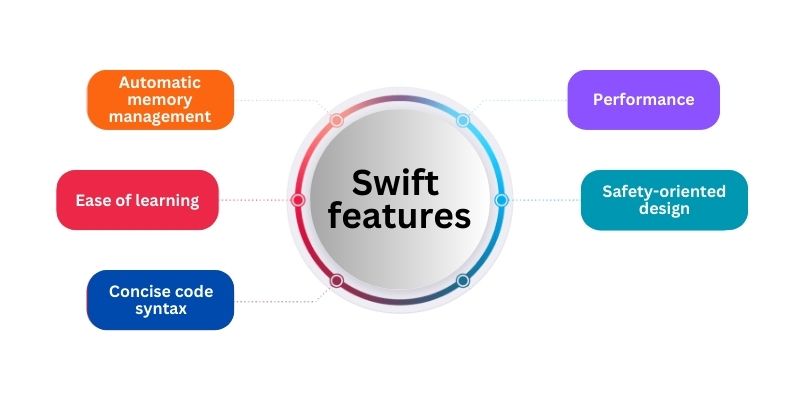
Swift, an evolution of C-based programming, boasts several notable features that enhance code readability and writability. Some of these features include a robust error handling system, user-friendly generics, efficient iteration over collections, support for functional programming patterns, tuples, multiple return values, and powerful flow control mechanisms.
Enrol for Swift Developer Course in Trivandrum and gain knowledge in iOS app development and be a full-fledged developer. We also provide 100% placement assistance.
Automatic memory management: Swift’s Automatic Reference Counting (ARC) system automates memory management, eliminating the need for manual memory handling. This feature saves developers time and effort, as they don’t have to explicitly manage memory allocation and deallocation.
Ease of learning: Swift’s features make it highly approachable, even for individuals without prior coding experience. It provides a beginner-friendly playground environment that enables independent learning and exploration of objective c to swift concepts and syntax.
Concise code syntax: Swift’s syntax is designed to be concise, allowing developers to achieve more with fewer lines of code. It minimises the need for repetitive statements and simplifies string manipulation, resulting in more streamlined and readable code.
Performance: Swift’s optimised compiler generates efficient code, resulting in faster execution. This performance enhancement alleviates the burden of performance optimisation and ensures the objective c to swift execution of programs.
Safety-oriented design: Swift prioritises safety by reducing the likelihood of errors. It employs runtime crash triggers to identify and address issues promptly, minimising the chance of bugs and enhancing overall program reliability.
Swift Advantages
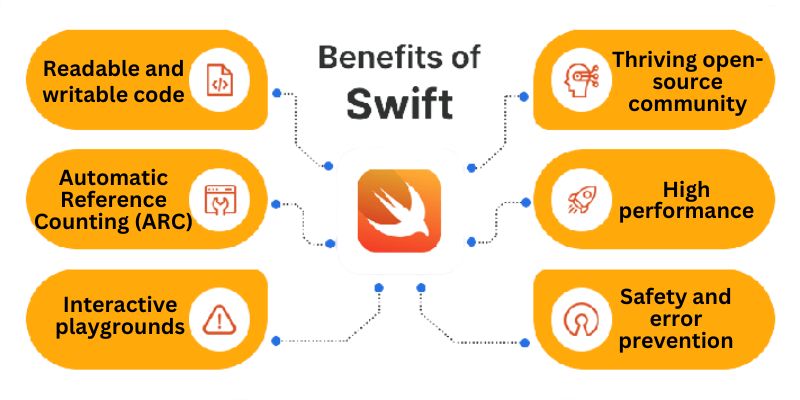
Swift provides several significant advantages:
High performance: Thanks to its streamlined syntax and modern features, Swift delivers impressive performance, surpassing Objective-C with a more than two-fold increase in speed. These enhancements enable developers to code swiftly and efficiently.
Automatic Reference Counting (ARC): Swift incorporates an Automatic Reference Counting feature, which handles memory management automatically. This feature saves developers time and effort by efficiently managing memory usage in their applications.
Readable and writable code: Swift promotes code readability and writability. With a syntax similar to other popular C-based languages like Java and JavaScript, swift ios code offers a modern and concise programming experience.
Thriving open-source community: Swift benefits from a vibrant open-source community where developers collaborate, contribute, and exchange ideas. Accessible to the public, this community provides opportunities to learn and explore new concepts and advancements in Swift.
Interactive playgrounds: swift ios code includes interactive playgrounds, which are available for download on various Apple devices such as iPhones, iPads, and Macs. These playgrounds serve as valuable learning tools, allowing beginners to experiment and accelerate their understanding of Swift algorithms and coding.
Safety and error prevention: Swift is designed to prioritize safety and reduce the occurrence of coding errors. It incorporates compiler features that enhance code safety, minimizing the risk of runtime crashes and ensuring more reliable app development
Swift Disadvantages
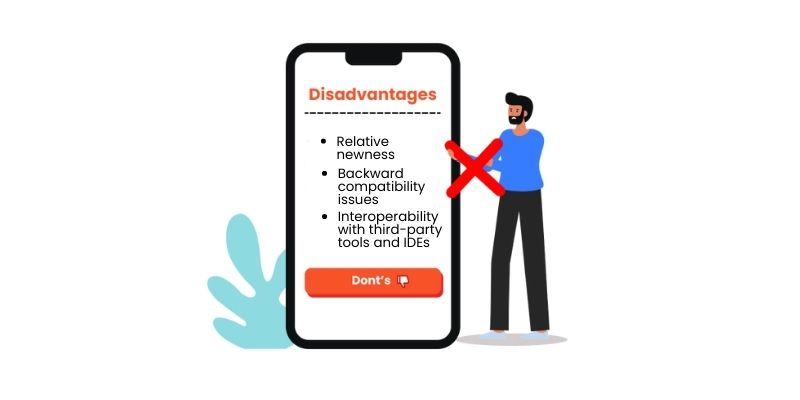
Despite its numerous strengths, the swift ios code programming language does have a few limitations.
Relative newness: Unlike Objective-C, which has a long history since its inception in the 1980s, Swift is a relatively new language introduced in 2014. As a result, Swift undergoes frequent updates, which may render it incompatible with previous versions of iOS. This can pose challenges for developers who need to maintain compatibility with older iOS versions.
Backward compatibility issues: Swift’s continuous evolution may lead to compatibility issues with older versions of the iOS operating system. As a result, projects built with newer versions of Swift may not be compatible with older iOS versions. This can require developers who need to support older iOS versions to resort to using Objective-C.
Interoperability with third-party tools and IDEs: Due to the dynamic nature of swift ios code and its lack of backward compatibility, finding third-party tools and Integrated Development Environments (IDEs) that seamlessly integrate with Swift can be challenging. While there are ide for swift options such as Atom and AppCode, and Swift libraries available, developers may encounter limitations and fewer options compared to the more established Objective-C ecosystem.
After carefully considering the features, benefits, and limitations of both programming languages, it can be concluded that swift ios code provides a broader range of advantages compared to Objective-C. Swift is characterised by its concise syntax and enhanced readability, making it accessible even to non-programmers.
Join the Swift Developer Course in Bangalore, which has been scrupulously designed for the Ahmedabad-based student who intends to begin their career as a Swift Mobile app developer.
In addition, Swift prioritises reliability and minimises the likelihood of crashes by addressing common errors prevalent in other languages. Furthermore, swift ios code exhibits superior performance, utilising memory more efficiently, making it an optimal choice for iOS application development.
